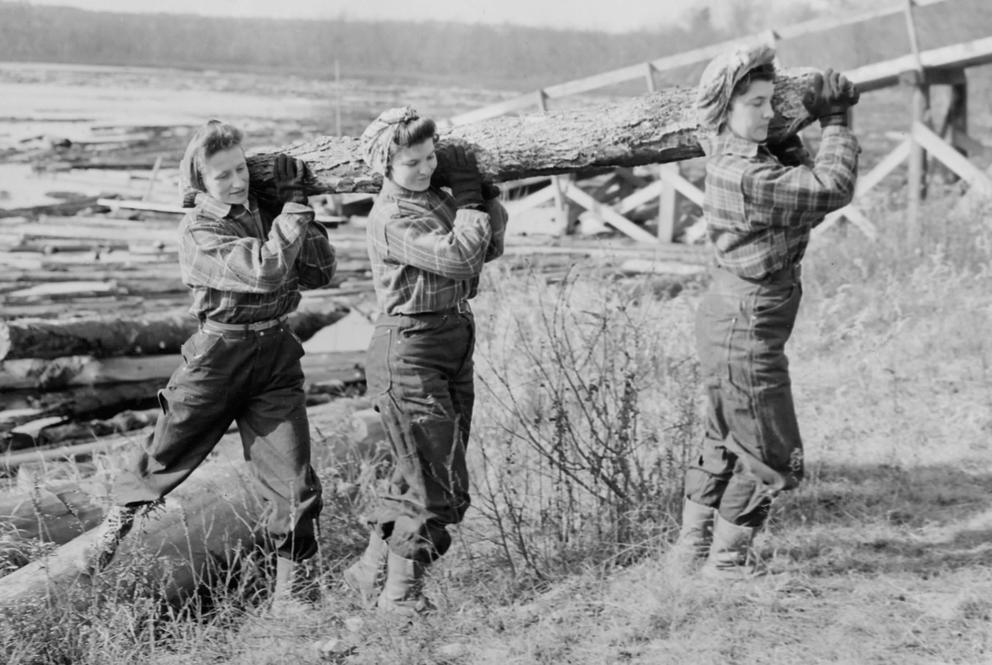Podcast | How war created demand for NW spruce – and “lumberjills”
Sitka trees were key materiel in both world wars. Knute Berger shares how the need for wood and the women who harvested it changed logging.

Young women working as log drivers during WWII. (National Archives)
In the early 20th century, Sitka spruce, a giant conifer native to the Pacific Northwest, became known as an excellent material for building airplanes. As a result, when the U.S. entered World War I, the demand for that wood exploded.
The American military set up what was called the “Spruce Division” and brought in soldiers to Washington forests to help manage a growing industry. Over time, as the demand for spruce continued into World War II, women began to fill tens of thousands of timber jobs traditionally held by men.
Subscribe to Mossback on Apple Podcasts, Spotify, Amazon, or Podbean.
Cascade PBS’s resident historian Knute Berger dug into these overlapping histories in a recent episode of the Mossback’s Northwest video series, but there is far more left to explore.
In this episode of Mossback, Berger joins co-host Stephen Hegg to discuss the unique characteristics of Sitka spruce and why the U.S. military was so interested in it; labor strife and the role of unions in the Northwest logging industry in the early 20th century; the entrance of female workers into the lumber camps and the rampant sexism they sometimes faced; and the larger impact that all of these forces had on the Pacific Northwest and its timber business.



